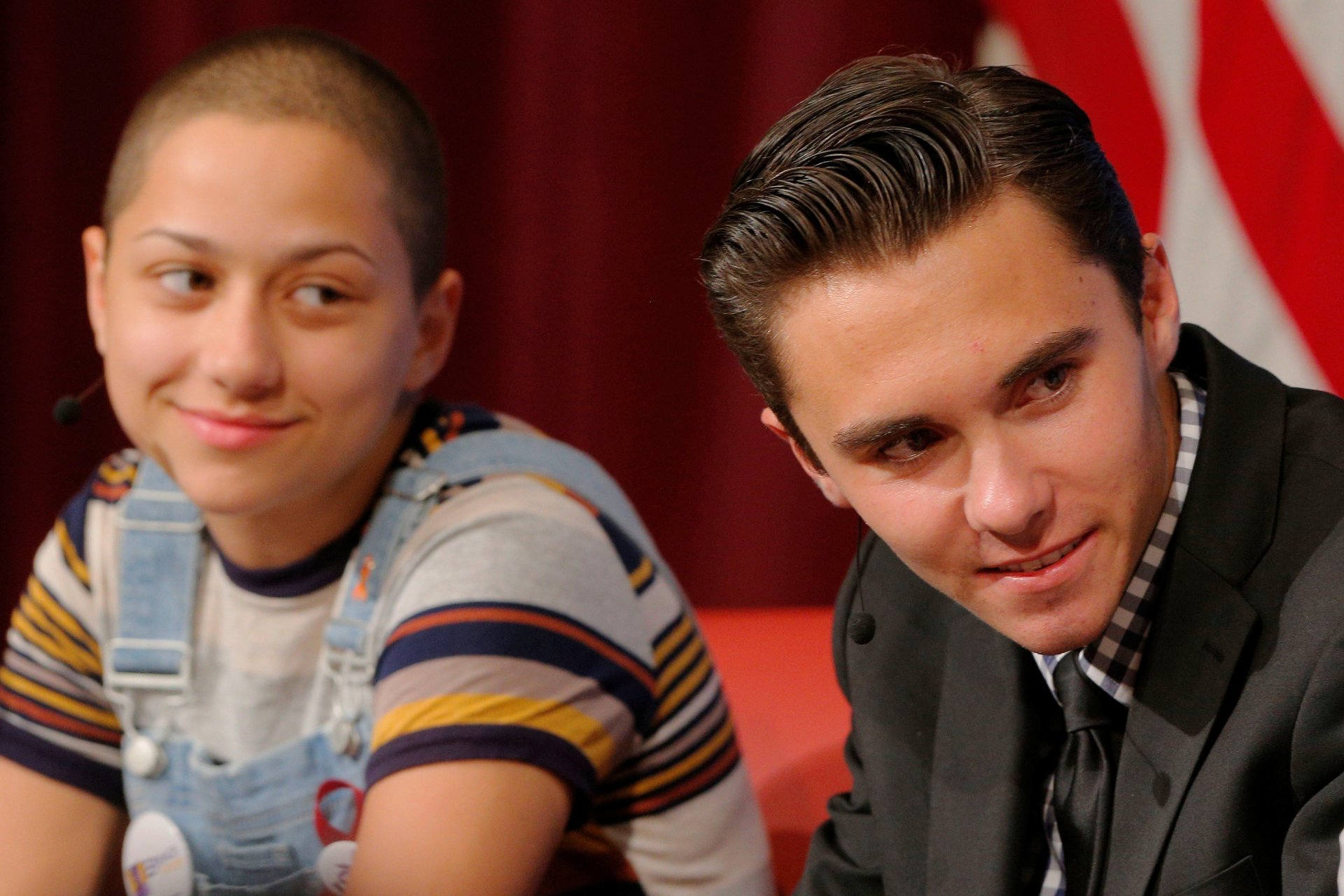Twitter’s young activists are chasing power players 140 characters at a time
Advertisers left Fox News’ Laura Ingraham in droves last week after Parkland shooting survivor David Hogg encouraged a boycott of the conservative talk-show host. As major companies began pulling out—forcing Ingraham to fill air time with Ad Council spots (filler for unsold ad space)—Ingraham issued an apology to Hogg, announcing soon after that she would be taking a week-long break from her show. Fox, however, said the vacation was pre-planned.


Advertisers left Fox News’ Laura Ingraham in droves last week after Parkland shooting survivor David Hogg encouraged a boycott of the conservative talk-show host. As major companies began pulling out—forcing Ingraham to fill air time with Ad Council spots (filler for unsold ad space)—Ingraham issued an apology to Hogg, announcing soon after that she would be taking a week-long break from her show. Fox, however, said the vacation was pre-planned.
The drama began a few days earlier when Ingraham mocked the high school senior in a tweet about his college rejections:
In response, Hogg—who’s been one of the most visible gun control advocates at the rallies following the February 14th shooting at Marjory Stoneman Douglas High School—mounted a social media boycott urging advertisers to pull ads from Ingraham’s show.
Hoggs’ actions worked so well that companies have continued to remove their ads despite Ingraham’s apology, revealing, once again, the remarkable power of the tweet.
Hashtag activism
It’s no secret that Twitter is an incredibly powerful platform. A single tweet from Donald Trump can cause a company’s stock to swan dive, and major geopolitical events are regularly announced via tweet. But Twitter also has a long history as a vehicle for activism—serving as a potent platform for national conversations for communities (especially marginalized ones) to coalesce around the issues that matter to them. It’s a place where the world’s decision-makers gather to inform, critique, influence and mobilize.
Black Twitter is the longstanding example of this kind of virtual community-building. From #ICan’tBreathe to #BlackLivesMatter, Black Twitter has remained a powerful space for mobilization for years now. And while Facebook is still the most popular of the major social media platforms—with 2.2 billion monthly active users in the fourth quarter of 2017— major activism has played out on Twitter more than any other virtual arena.
High schoolers, like the Parkland survivors, are part of a demographic associated with the fluffier—and more image-based—social medias. While major moments can be shared on the Snapchats and Instagrams of the world, they are less conducive to all-out organization. Meanwhile, their immediate elders—aka Millennials—have dominated so-called “hashtag activism” on Twitter, with 40% of Twitter’s total users falling between the ages of 18 and 29.
Now that those under 18 are flocking to Twitter, they’re revitalizing the site in a much-needed way. While they aren’t included in any recent demographic data for the site, it’s clear that via causes such as this latest wave of gun control, they’ve watched and learned from those who’ve come before them.
Yet along with its ease of use, young people are flocking to Twitter because it’s remained a key platform for adult decision makers—from political figures and celebrities to journalists and CEOs. These are the folks this latest crop of #hashtag activists need on their side and ready for action—and that action often starts on Twitter.
As the most social media savvy generation yet, the clout of young people like Hogg and fellow Parkland survivor Emily Gonzalez is unmistakable. Hogg’s shutdown of Ingraham is just one example of this, and the older generation of political commentators— those with years of experience on Twitter— would be wise to take notice.
This story reflects a change after a statement from Fox News confirming that Laura Ingraham’s vacation was pre-planned.